Porsche’s engine technology has evolved massively over the years, but since the beginning, one thing has remained: the flat engine layout.
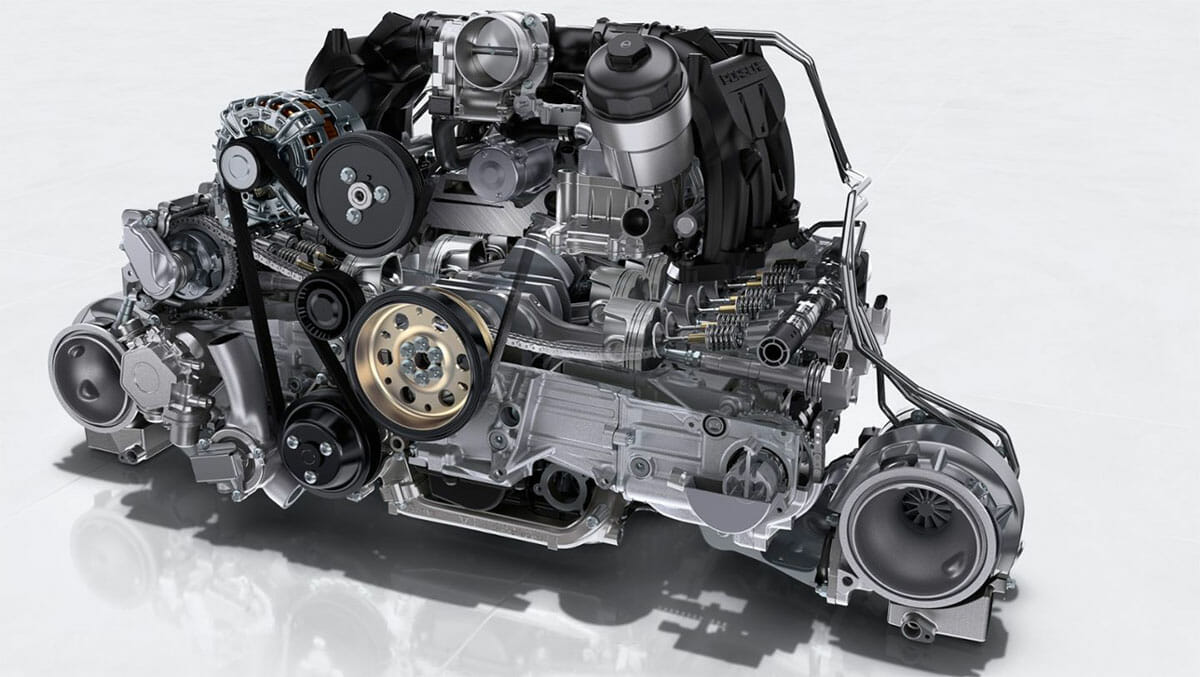
If you are in the market for a new or used Porsche, you will almost certainly be buying one with a flat engine. Also known as a boxer engine, this layout has remained a staple of Porsche since the very beginning.
While technology has improved and changed over the years to accommodate better power and emissions figures, the basic engine design and concept remain the same.
While inline and V-shaped engines operate with the pistons above the crankshaft moving up and down, flat engines work a bit differently. The crankshaft sits in the middle of the engine block, and the rod and piston assemblies move from side to side rather than up and down. This layout is where the flat engine terminology comes from.
Furthermore, the boxer designation comes from the same thing, wherein the pistons moving side to side resemble that of a boxer’s arms coming straight from their body.
The first Porsche to receive a flat engine was, in fact, the first Porsche ever. Porsche 356 roadster serial number 001 was built in 1948 and was the first car to bare the Porsche name.
Ferdinand Porsche used many components from the Volkswagen Beetle, which he designed. The axles, wheels, breaks, and steering components on the Porsche 356 all came from the VW Beetle.
Most importantly, though, is the engine that also came from the Beetle. The 35-horsepower air-cooled 1.1-liter flat four-cylinder. Since then, the flat engine remains a staple of nearly every single Porsche model created.
Over the past 70 years, technology has endlessly evolved. Advancements in engine tech make the Porsche flat engine an undeniable sports car powerhouse.
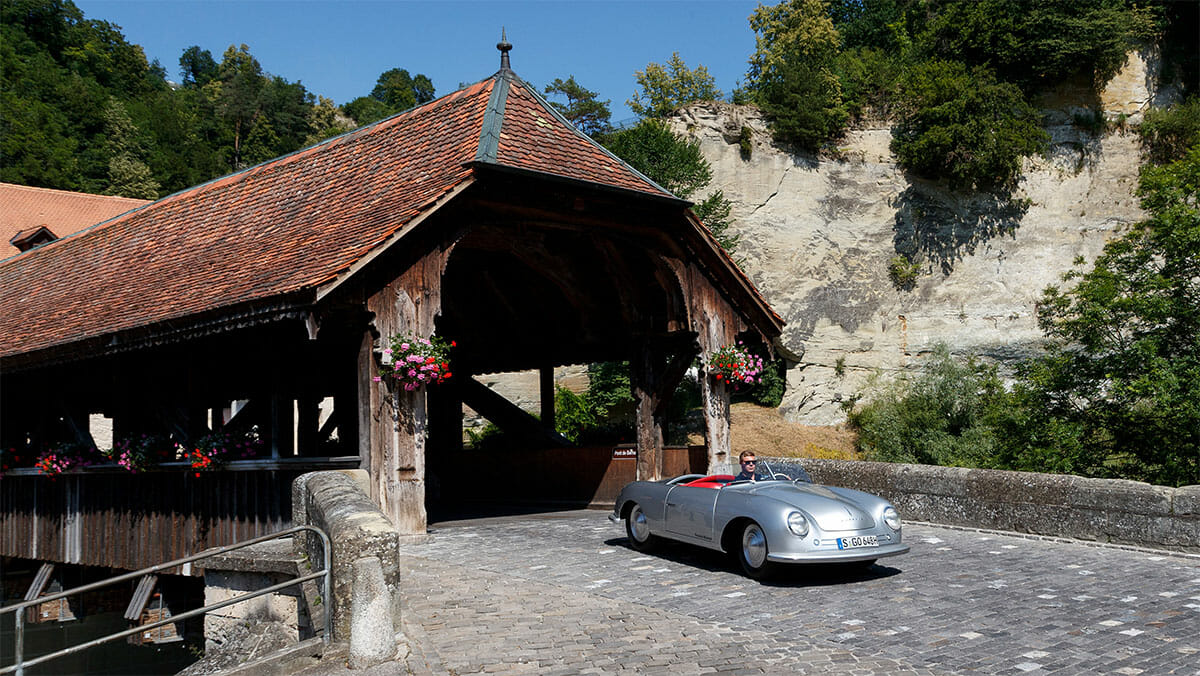
Porsche Flat-engine History: Major Developments
Though the 356 is the origin of the Porsche flat engine story, the 911, and its flat six-cylinder is the Porsche that pushed the flat engine’s development into the brute force that it is today.
Though, a flat four-cylinder remained an option until 1969 by way of the 911’s sister car, the 912, which is identical to the 911 aside from the engine.
In 1964, the first Porsche 911 became available to the public. Its 2.0-liter flat six-cylinder engine made 128 horsepower and did not differentiate from the old VW engines that the 356 started with, aside from having two additional cylinders.
However, this era of 911, which lasted until 1973, would introduce the first major technological leap for the Porsche flat engine. In 1969, the Porsche 911 S came with mechanical fuel injection.
While rudimentary by today’s standards, this fuel injection system allowed for more precise control of fueling. The 1969 911 S saw a massive power increase to 178 horsepower. From then on, Porsche engineers set out on a quest for power and efficiency perfection that is still ongoing to this day.
1974 brought the next generation of 911, known as the G series, which brought another monumental piece of Porsche history. 1975 saw the first introduction of a turbocharged variant of the iconic flat-six engine.
The 1975 Porsche 911 Turbo had a 3.0-liter turbocharged flat six-cylinder putting out a frightening 270 horsepower. By 1989, the G series 911’s final year, the Turbo model climbed to 282 horsepower.
The biggest Porsche flat engine story of the 80s undoubtedly comes from the iconic Porsche 959. This quarter-million-dollar car featured a 2.8-liter twin-turbocharged with a breathtaking 444 horsepower output. It was the first Porsche engine to receive a modern electronic fuel injection system.
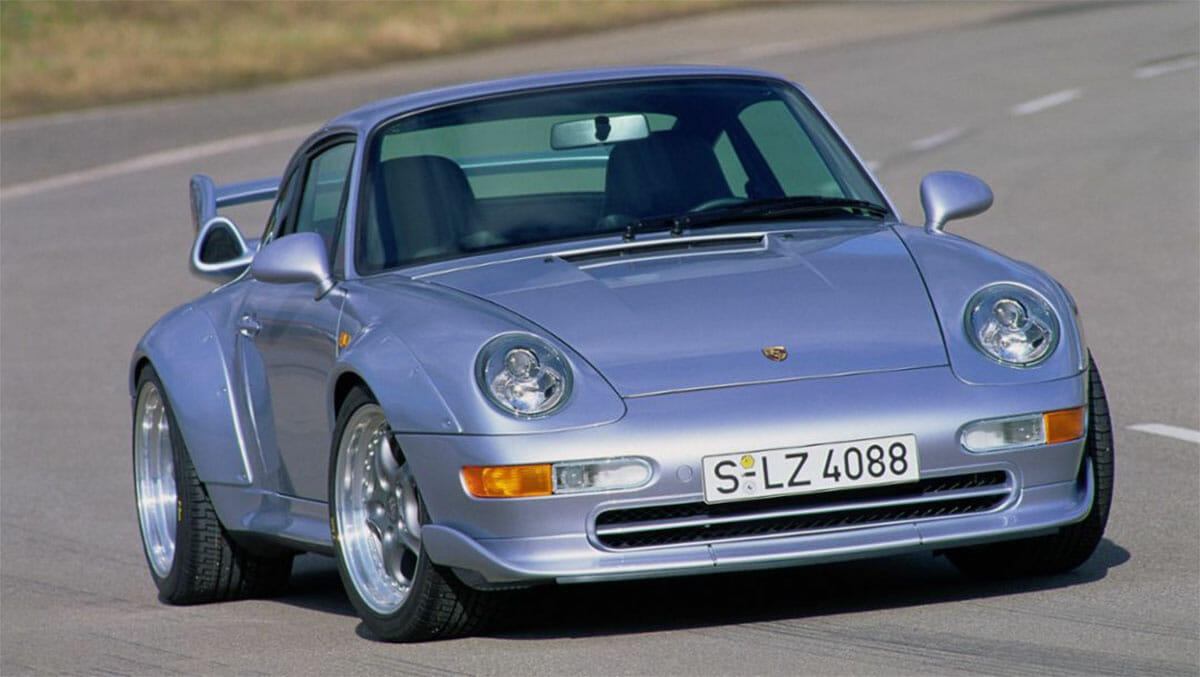
Further Advancements in Porsche Engine Technology
Porsche took lessons learned from the 959 while moving forward in its sports car lineup. 1995 brought the introduction of the 993 generation of the Porsche 911. Alongside it came the first use mass production of modern electronic fuel injection.
This allowed for even more precise engine tuning and power production. Even the base non-turbocharged Carrera models came with a healthy 281 horsepower output.
The 993 generation also brought yet another tech jump to the Porsche flat engine lineup. The 993 turbo variants feature twin turbochargers reminiscent of those found on the 959. Since the 993, all turbo variants of the Porsche flat engine are twin-turbocharged.
The most fearsome variant of the 993 is the 911 GT2. It features a twin-turbocharged 3.6-liter engine outputting an eye-watering 430 horsepower. Unlike the all-wheel-drive 959 and other 993 Turbo models though, the GT2 is rear-wheel-drive. Its massive power output and uncontrollable nature netted it the nickname “widowmaker.”
Though the principle of a flat engine with electronic fuel injection has remained the same since the 993, Porsche continues developing and building onto the available electronic fuel injection technology.
Engines are continuing to become more fuel-efficient and powerful at the same time. However, one of the biggest shifts in engine tech came in 1998 when Porsche switched to water-cooled engines, abandoning the flat engine’s air-cooled history entirely.
The epitome of power output in the Porsche flat engine family comes in the form of the 2019 Porsche 911 GT2 RS. The twin-turbocharged 3.8-liter flat-six has an absolutely mind-blowing 691 horsepower and propels the car to 60 miles per hour in under three seconds.
Porsche’s family of flat engines also found new homes with the introduction of Porsche’s more entry-level cars; The Porsche Boxster, introduced in 1996, and the Porsche Cayman, introduced in 2006.
Porsche Flat Engine Problems
Generally speaking, the family of Porsche flat engines is impressively reliable. However, there are certain things to be on the lookout for. As with any used car, it is important to investigate the vehicle’s history to ensure you know what you’re getting yourself into.
This being the case, you should always run a vehicle’s VIN through our VIN research tool to double-check for any major accidents or repair history.
If you’re in the market for a classic Porsche, you’ll be happy to know that they don’t have many issues that can cause a major mechanical failure. Buying any classic car is inherently risky.
Older Porsche carburetor and mechanical injection systems can be finicky and tough to give a proper tuneup. Older 911s are also prone to oil leaks, as is the case with virtually every classic car.
Signature failures for the 964 models (1989-1994) include vibrations at low rpms due to the failure of the dual-mass flywheel on older models and a build-up of ozone within the distributor housing that can cause engine damage.
However, the distributor situation is relatively easily alleviated with a vent kit. Flywheels, however, are an engine-out affair to replace.
Porsche 911 993 models (1995-1998) also have a few signature issues pertaining to the engine and its components. Exhaust systems are known to rust, and AC components have been known to fail.
However, the 993 generally is free of commonplace major mechanical engine failures.
Most Prominent Porsche Engine Failure Point
The most prominent and widely discussed issue you’ll run into in the used market is the dreaded intermediate shaft (IMS) bearing failure. When an IMS bearing fails, it can cause the engine timing’s failure, resulting in the complete destruction of the engine. As you may imagine, replacing a Porsche engine is not cheap.
The IMS bearing failure is commonplace on the M96 and M97 flat six-cylinder engines found in 911s, Boxsters, and Caymans, spanning from 1997 to 2008.
However, the most prominent IMS bearing failures occurred up to 2006 in the 996 era Porshe 911s and the 986 Boxsters. Though the later year examples have a much smaller IMS bearing failure rate, it is still possible.
It is important to check a vehicle’s VIN and service history before purchasing. If you find a car in this date range you are interested in buying; it is the safest bet to budget an immediate replacement of the IMS bearing. Having a qualified mechanic replace an IMS bearing can cost upwards of $2,500.
However, replacing an engine can be well over triple that. Therefore, preemptively replacing the bearing is an absolute must.
Omitting the era of IMS bearing issues, you’d be hard-pressed to find any major failure points of Porsche flat engines. New or old, Porsche engines have a reputation of being impressively robust given their high-performance nature.
Some newer models scarcely suffer from “bore score,” which is scraping of the engine cylinder walls due to insubstantial lubrication.
However, if a Porsche has been well taken care of, you will not likely run into any major issues.
Current Porsche Flat Engine Offerings (911)
The 2018 Porsche 911 is the first model year of the current generation 911, the 992. The 2021 model year brings with it four options for the 911; The Carrera, Carrera S, Turbo, and Turbo S.
All of which are twin-turbocharged flat-six engines with varying power outputs as displayed below:
- Carrera (base model): 3.0-liter twin-turbocharged flat-six with 379 horsepower and 331 lb.-ft. of torque
- Carrera S: 3.0-liter twin-turbocharged flat-six with 443 horsepower and 390 lb.-ft. of torque. Available seven-speed manual transmission.
- Turbo: 3.8-liter twin-turbocharged flat-six with 572 horsepower and 553 lb.-ft. of torque.
- Turbo S: 3.8-liter twin-turbocharged flat-six with 640 horsepower and 590 lb.-ft. of torque
Even the base model output of 379 horsepower is a remarkably far cry from the 911’s humble beginnings. That being said, the fuel economy ratings are not nearly as upsetting to look at as one might think.
Credit to this fact goes to ever-evolving efficiency technology. Base models fetch an EPA combined rating of 20 mpg, soaring up to 24 mpg on the highway. Turbo models see a combined rating of 17 mpg and up to 20 mpg highway. Those numbers aren’t all that bad, considering the mind-melting power available.
A base model 911 has a starting price of $101,200. The most expensive end of the spectrum comes in the form of the Turbo S, with a starting price of $203,500.
However, if you want a touch of the newest 911 lifestyle without taking the full blow of MSRP, consider buying a 2019 or 2020 model year for a substantial price reduction.
Though not yet available, the track-focused 992 GT3 was recently announced and will come with a naturally aspirated 4.0-liter flat six-cylinder engine producing 502 horsepower.
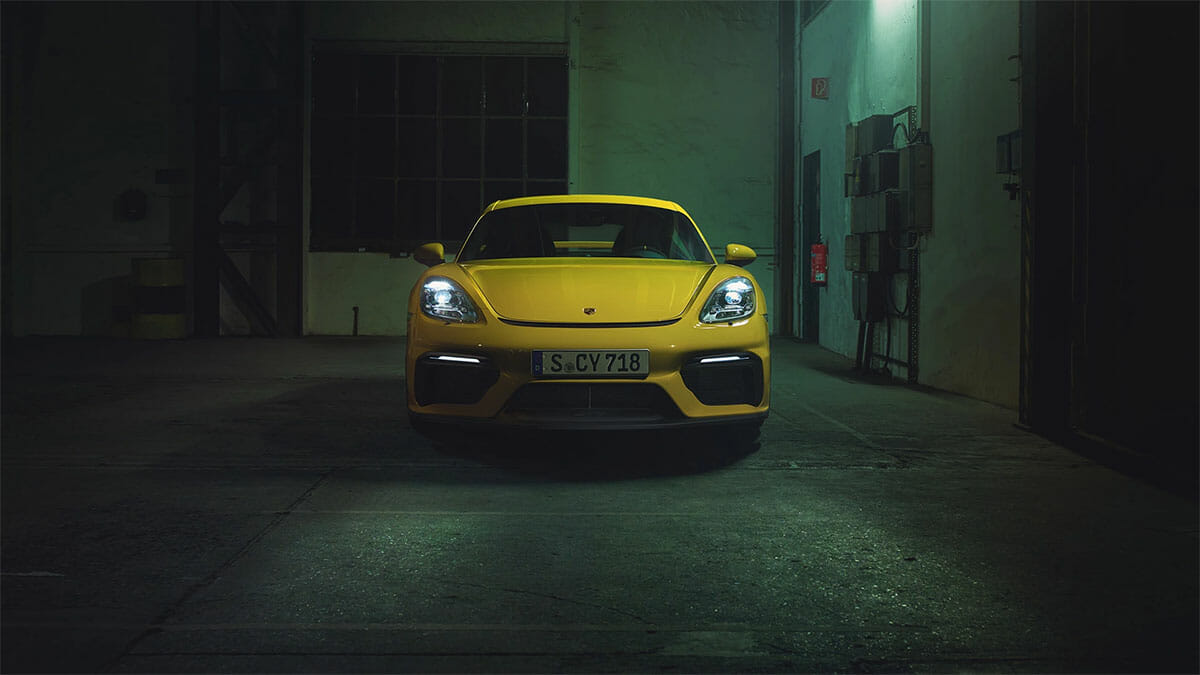
Current Porsche Flat Engine Offerings (718 Boxster/Cayman)
While the 911 is the flagship model for Porsche, it is not the only contender containing the iconic flat engine layout. One of the exciting features of the 718 series is the reintroduction of a flat four-cylinder engine.
This is the first time a four-cylinder flat engine is available since the discontinuation of the Porsche 912 in 1969.
The current generation Porsche Boxster and Porsche Cayman share the 718 nomenclature, which remains largely the same since the 2017 model year. Also shared are the engine options, listed below:
- Cayman/Boxster (base model): turbocharged 2.0-liter four-cylinder with 300 horsepower and 280 lb.-ft. of torque
- Cayman S/Boxster S: turbocharged 2.5-liter four-cylinder with 350 horsepower and 309 lb.-ft. of torque
- Cayman GTS/ Boxster GTS 4.0: 4.0-liter six-cylinder with 394 horsepower and 309 lb.-ft. of torque
- Cayman GT4/Boxster Spyder: 4.0-liter six-cylinder with 414 horsepower and 309 lb.-ft. of torque
The Spyder and GT4 still do decent on fuel, given their performance figures. According to the EPA, they each net a combined 19 mpg rating with up to 24 mpg highway.
Four-cylinder variants see up to 27 mpg highway and 21 mpg combined, additionally.
The 2021 Porsche Boxster has a starting MSRP of $62,600 for the base model, with prices climbing to a starting point of $98,300 for the Spyder. The Cayman starts at $60,500, with the GT4 topping the price point list starting at $101,200.
Though these cars are aimed more toward the entry-level Porsche buyer on the low end, they still live and breathe the Porsche spirit from end to end.
Additionally, given that not much has changed since their release, adding earlier model years to your used 718 searches can drastically decrease the amount you’ll spend without sacrificing any performance or features.
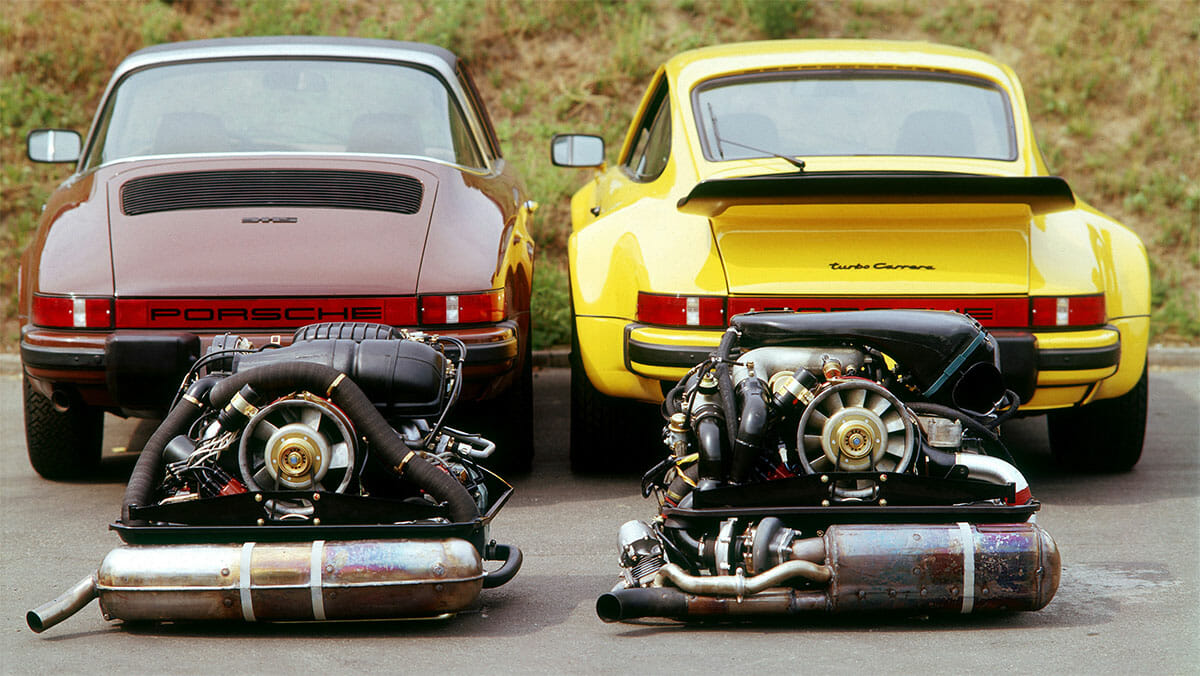
Porsche History in the Making for Over 70 years
Porsche has grown far beyond the scope of Ferdinand Porsche’s hand-shaped 356 bodies full of Volkswagen parts. However, the company as a whole has not lost sight of its heritage. While they continue to push the boundaries of performance, they simultaneously push the envelope of fuel efficiency and technology.
All the while still maintaining the iconic flat engine layout for some of the greatest sports cars the world has ever seen, even in comparison to some fierce competition.
The current 911 Turbo S is competitive on many tracks and comparable in acceleration times to the Lamborghini Aventador SVJ. However, the Aventador SVJ costs over twice as much at $517,700.
Furthermore, it outperforms the Ferrari F8 Tributo in many categories and on various race tracks. Though, it still comes in $50,000 cheaper.
As car and engine technology continues to evolve, nobody can say for certain how long the Porsche flat engine’s production will continue. With Porsche consistently moving toward hybrid and electric drivetrains, we wouldn’t at all be surprised to see a hybrid 911 in the near future.
One thing is certain, though. The Porsche flat engine family leaves a historic mark on motorsports and automobiles as a whole, and their advancements and impact can not be called into question.
If you find yourself buying a Porsche, whether it be a Boxster, Cayman, 911 or any other model, you are going to be satisfied with your purchase.
Photos: Porsche
